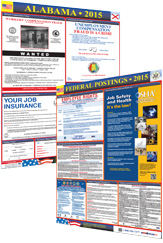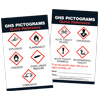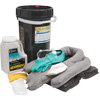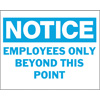Employee Safety Information Requirements
Informing employees about labor laws and safety is not only essential for keeping workers safe, it is also the law.
The U.S. Department of Labor (DOL) requires labor laws posters and notices be displayed in the workplace where employees can easily read them.
Below is a list of posters that employers may potentially be required to display:
- Job Safety and Health Protection
- Equal Employment Opportunity
- Fair Labor Standards Act (FLSA)-Minimum Wage
- Employee Right for Workers with Disabilities/Special Minimum Wage Poster
- Family & Medical Leave
- USERRA-Veteran Rights
- Federal Construction Contracts (Davis-Bacon)
- Construction Contracts
- Employee Polygraph Protection
- Migrant & Seasons Agricultural Workers
- Federal Contractor Posters
Not all businesses are required to display all posters. The DOL FirstStep Poster Advisor is a resource that walks employers through a series of questions to help them determine which posters they are required to display.
State labor laws vary. Visit DOL for more guidance on what posters you are required to display.
Safety Data Sheets and OSHA's Standard
Many American workers will come in contact with chemicals such as cleaning chemicals, paints, solvents, and pesticides in the workplace.
The Occupational Safety and Health Administration (OSHA) defines a hazardous chemical as any chemical that is classified as a physical hazard or a health hazard, a simple asphyxiant, combustible dust, pyrophoric gas, or hazard not otherwise classified. Exposure to hazardous chemicals can be dangerous to the health and physical well being of workers.
OSHA's Hazard Communication Standard 29 CFR 1910.1200 requires chemical manufacturers and importers to evaluate the hazard of chemicals they produce or import, and to provide information about them through labels on shipped containers and more detailed information sheets called Safety Data Sheets (SDS).
Employer Requirements on SDS
OSHA requires employers who use chemicals to obtain labels and SDS from their suppliers.
Employers are also required to establish a hazard communication program. This program must ensure the following:
- All containers of hazardous chemicals are labeled
- SDS are maintained for all hazardous chemicals
- Workers are trained on program elements, hazards, protective measures, etc.
Download SDS
HD Supply keeps you informed and in compliance with OSHA's standard. We provide SDS which can be downloaded and printed out to help you comply with hazard communication standards.
Secondary Container Labels
HD Supply provides secondary container labels to help you remain in compliance. When chemicals, such as cleaning chemicals, are transferred to secondary bottles, the bottles must have an identification label. OSHA's standard states the identity of the chemical and appropriate hazard warnings must be shown on the label.
We offer free labels for secondary containers. Learn More
Globally Harmonized System for Hazard Communication
To better protect workers from hazardous chemicals, OSHA revised its standard by aligning with the United Nations' Globally Harmonized System for Hazard Communication (GHS).
The GHS is an international approach to hazard communication. The GHS provides criteria for classification of chemical hazards, and a standardized approach to label elements and safety data sheets. Learn More on GHS Compliance
Hazard Communication Materials

-
Hand Washing Posters - Walks employees through the proper steps of hand washing
-
Global Harmonization System Wallet Cards - Use as a training aid to familiarize employees with the new GHS pictograms
-
Global Harmonization System Reference Center Posters - Details the most important changes to the SDS GHS program and includes new GHS formatted label elements and pictograms
-
Lockout Safety Posters - Explains energy lockout and tagout, and the basic elements of a lockout safety program
-
Bloodborne Pathogens Posters - Provides the universal precautions for employees who are at risk of exposure to blood or other potentially infectious materials
-
First Aid Posters - Provides information on first aid, CPR, and choking emergencies
-
Heat Stress Training Posters - Covers how to identify heat stroke and heat exhaustion
-
Restaurant Safety Posters - Provides safety information and best practices on the receiving area, using a thermometer, refrigeration, and storeroom basics
-
Federal Labor Law Posters - Meets mandatory federal posting requirements for displaying employee rights and job safety
Shop Safety Posters & Employee Safety Training Manuals
NOTE: This information is a summary interpretation and was prepared as general reference material only. This summary is not authoritative as laws can be amended over time. For specific compliance requirements and updates, please refer to the actual code language and the statute or legal counsel.






